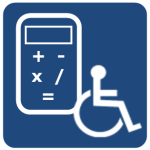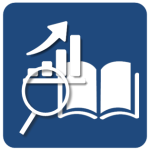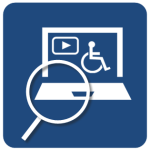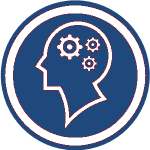Accessibility Issues in Teaching Mathematics
Toby Wong
Introduction
 Teaching math has pros and cons, and there are many things to consider when planning to teach math. One of the significant components of teaching math is accessibility. As an educator, there are many accessibility issues to think about, like helping visually impaired, deaf, hard-of-hearing, or sensory-impaired students read and interpret math. There are also questions to consider, like whether online and electronic math textbooks are influential for accessibility, whether online e-learning tools are helpful, and whether virtual manipulatives benefit students with math. There can be solutions found in research and the internet, but we have to be careful about what we can trust from the internet. This reading will focus on taking a look at the accessibility issues brought up when teaching math and trying to see the solutions that come up in research. There will also be a look at what accessibility issues, solutions, and resources that come from the internet and some thoughts and analysis by the author regarding some problems found in the research and the internet.
Teaching math has pros and cons, and there are many things to consider when planning to teach math. One of the significant components of teaching math is accessibility. As an educator, there are many accessibility issues to think about, like helping visually impaired, deaf, hard-of-hearing, or sensory-impaired students read and interpret math. There are also questions to consider, like whether online and electronic math textbooks are influential for accessibility, whether online e-learning tools are helpful, and whether virtual manipulatives benefit students with math. There can be solutions found in research and the internet, but we have to be careful about what we can trust from the internet. This reading will focus on taking a look at the accessibility issues brought up when teaching math and trying to see the solutions that come up in research. There will also be a look at what accessibility issues, solutions, and resources that come from the internet and some thoughts and analysis by the author regarding some problems found in the research and the internet.
What is Found: The Issues, The Solutions, and Analysis!
What Comes from Research?
 As we know, there are accessibility issues with teaching math, and there are solutions that can help ease those issues and try to remove the accessibility barriers. One problem can be helping visually impaired students interpret and understand math notations. A study by Alajarmeh et al. (2011) found that visually impaired students had a hard time interpreting and reading math notations and formulas because screen readers would mostly read it out as letters and operations, which can make the students not understand the context of the formulas and how to apply or use the formulas in math problems. A solution they found included the implementation of the Math Markup Language (MathML), which is a language software to help understand the context of reading or interpreting math and science notations on the interweb, which is approved by the World Wide Web Consortium (W3C) (Bos, n.d.). W3C is an organization that develops standards and guidelines for accessibility to make the Internet and web-based resources more accessible (World Wide Web Consortium, 2024). This software seems to be one of the fundamentals for reading math online. There can be other software that can help students read math, like the math screenreader MathPlayer (Math for More, 2024), which can read out loud mathematical expressions (Maćkowski et al., 2018). Also, when it comes to helping blind or visually impaired students, educators have to make sure that it aligns with the Digital Accessible Information System (DAISY) standard, which creates a flexible and navigable reading experience for these students (Maćkowski et al., 2018; The DAISY Consortium, n.d.). The DAISY consortium is an organization that helps develop tools, resources, practices, and standards that are compliant with the DAISY standard, ensuring accessibility for people with print disabilities (e.g. impaired vision) (The DAISY Consortium, 2024). When it comes to hard of hearing, deaf, or sensory impaired students, issues for these students are related to the acquisition of language skills that are needed to be successful in speech, writing, reading, signing, and being able to solve math applications (Adamo-Viallani & Wibur, 2008). There are solutions to it when learning math; although not perfect, it comes in the form of 3D animation with sign language and VR technology. Adamo-Villani & Wilbur (2008) suggested two potential software: Smile (Actimage, 2023), which is an immersive learning game, and Mathsigner (Purdue University, 2024), which is a 3D animation sign language interactive software with activities to help teach math. Smile helps sensory-impaired students by playing through a VR game that has a story progression that progresses when students finish the math and science-related tasks the game has while also having sign language support (Adamo-Viallani & Wibur, 2008).
As we know, there are accessibility issues with teaching math, and there are solutions that can help ease those issues and try to remove the accessibility barriers. One problem can be helping visually impaired students interpret and understand math notations. A study by Alajarmeh et al. (2011) found that visually impaired students had a hard time interpreting and reading math notations and formulas because screen readers would mostly read it out as letters and operations, which can make the students not understand the context of the formulas and how to apply or use the formulas in math problems. A solution they found included the implementation of the Math Markup Language (MathML), which is a language software to help understand the context of reading or interpreting math and science notations on the interweb, which is approved by the World Wide Web Consortium (W3C) (Bos, n.d.). W3C is an organization that develops standards and guidelines for accessibility to make the Internet and web-based resources more accessible (World Wide Web Consortium, 2024). This software seems to be one of the fundamentals for reading math online. There can be other software that can help students read math, like the math screenreader MathPlayer (Math for More, 2024), which can read out loud mathematical expressions (Maćkowski et al., 2018). Also, when it comes to helping blind or visually impaired students, educators have to make sure that it aligns with the Digital Accessible Information System (DAISY) standard, which creates a flexible and navigable reading experience for these students (Maćkowski et al., 2018; The DAISY Consortium, n.d.). The DAISY consortium is an organization that helps develop tools, resources, practices, and standards that are compliant with the DAISY standard, ensuring accessibility for people with print disabilities (e.g. impaired vision) (The DAISY Consortium, 2024). When it comes to hard of hearing, deaf, or sensory impaired students, issues for these students are related to the acquisition of language skills that are needed to be successful in speech, writing, reading, signing, and being able to solve math applications (Adamo-Viallani & Wibur, 2008). There are solutions to it when learning math; although not perfect, it comes in the form of 3D animation with sign language and VR technology. Adamo-Villani & Wilbur (2008) suggested two potential software: Smile (Actimage, 2023), which is an immersive learning game, and Mathsigner (Purdue University, 2024), which is a 3D animation sign language interactive software with activities to help teach math. Smile helps sensory-impaired students by playing through a VR game that has a story progression that progresses when students finish the math and science-related tasks the game has while also having sign language support (Adamo-Viallani & Wibur, 2008).
Textbooks are a staple companion to teaching math as teachers and educators need context on what they are teaching, and textbooks give students opportunities to practice their math skills with questions given to them. When the age of digital and online textbooks arrived, textbooks were more easily accessible as students did not need to borrow and return them at the beginning and end of a course, and it does not damage, unlike physical textbooks, which, when you damage it, you have to pay for it. When it comes to digital textbooks, we have to ask if they are effective for accessibility. A study by Lewis et al. (n.d.) found that digital textbooks provided a positive experience for students with disabilities, resulting in improved assessment results while using them, and students developed independence skills in learning math. The study also states that when paired with a math screen reader, students had a positive impact because it helped them concentrate and understand the math concepts.
Now, digital textbooks are one resource we could use, but what about e-learning tools and their effectiveness? E-learning tools can consist of things like drill and practice websites or educational digital games. Wen et al. (n.d) took a look at these things with websites like Khan Academy(2024) and IXL Learning (2024) and games like Prodigy (n.d.) and Kahoot! (2024). They found some reasons for using e-learning tools, such as providing practice for students, trying to motivate and engage students with these activities, and seeing if educators can assess students with these tools and track their performance. While it seems these tools may sound fantastic to use, they also found there may be some issues with them, like trying to understand text-intensive user interfaces, not enough feedback is given for student performance, you are not able to change the difficulty levels on some of the activities, sometimes trying to start the activity with set up and maintenance can be a problem, and implementing/using assistive technology with the tool can be a challenge as well. In the end, the study by Wen et al. (n.d) says that the tools “are not sufficiently effective or inclusive for a large number of students with specific learning disabilities” but have recommended improvements with teacher views (making tools easy to use, involving special education teacher in the implementation of e-learning tools) and student views (better implementation of assistive technology for eLearning tools, avoid negative connotations of making students feel they are bad at math when developing the tools).
Math manipulatives are a helpful tool to help students visualize math problems, but are virtual math manipulatives as good as physical manipulatives? There are benefits and issues with virtual manipulatives. Shin et al. (2017) state that the benefits of virtual manipulatives for students are that they can follow virtual mental images on screen and help look at math relations and patterns with visual and numeric models. This can be used as an accommodation for students; it gets students actively engaged with math, and many of these manipulatives that are online are free and easy to access. They also state that there are some challenges with using virtual manipulatives in terms not all teachers are trained in using them, so practice is needed for educators by using web resources like video tutorials; if there were video tutorials for the students, it is not adequate to help them while the teacher should show them how to use it, teachers also need to find the proper success criteria when planning using these manipulatives, and as well how to implement it in their instructional lesson. Overall, the research shows there are issues in accessibility when teaching math, but there is also an abundance of resources that could help with these issues.
What Comes From The Internet?
 Searching the web, some issues and solutions may or may not have come up from the research. CAST (n.d.) has a unique page about teaching with accessible math; they have resources in terms of reading or interpreting math notations like EquatIO (TextHelp, 2024), a software that can help make math expressions accessible by converting into MathML format and well-known math learning software Desmos (2024) which started as math graphing calculator site then became math learning site with activities which can help students with visual impairments. There were some unique math resources from the Diagram Centre by Benetech (n.d.), but an issue was found: some of their resources will be defunct or pulled off the web. Toronto Metropolitan University (n.d) has a webpage that guides how to make math and science more accessible, but they focus on tools like Microsoft Word (2024) and the learning management system D2L (2024). These are assumed to be what the post-secondary institution uses, but they are helpful in terms of using MathML (Bos, n.d.), which makes learning math more accessible. Overall, after looking for a few sites, resources are abundant out there on the World Wide Web that make learning math more accessible, but there are issues like defunct resources that are no longer available.
Searching the web, some issues and solutions may or may not have come up from the research. CAST (n.d.) has a unique page about teaching with accessible math; they have resources in terms of reading or interpreting math notations like EquatIO (TextHelp, 2024), a software that can help make math expressions accessible by converting into MathML format and well-known math learning software Desmos (2024) which started as math graphing calculator site then became math learning site with activities which can help students with visual impairments. There were some unique math resources from the Diagram Centre by Benetech (n.d.), but an issue was found: some of their resources will be defunct or pulled off the web. Toronto Metropolitan University (n.d) has a webpage that guides how to make math and science more accessible, but they focus on tools like Microsoft Word (2024) and the learning management system D2L (2024). These are assumed to be what the post-secondary institution uses, but they are helpful in terms of using MathML (Bos, n.d.), which makes learning math more accessible. Overall, after looking for a few sites, resources are abundant out there on the World Wide Web that make learning math more accessible, but there are issues like defunct resources that are no longer available.
Thoughts and Analysis
 After researching and looking through websites, I noticed some problems. In terms of the websites, I can say there are issues. Other than the issue with resources being defunct and not usable anymore, there can be the issue of biases in terms of Toronto Metropolitan University source; there is the bias in terms these are the tools they used at the university, and it is assumed they are a sponsor for these companies. There also can be an issue where some of the resources are not free and are behind a paywall where you have to pay to use them. The research shows that there can be some issues. For example, I may have used old resources, which can be outdated, and some of the solutions to the issues may be defunct, just like some of the web resources. The source of the 3D animation and VR article may be outdated because that study was an ongoing project and may have evolved. The digital textbook source is also an example of one being outdated as we are in the digital textbook age, but its results can prove essential and guide helping students in need. For my thoughts, I will say there are accessibility issues in teaching math and solutions to help it, but I believe that we are not there fully yet in terms of digital accessibility as the resources that are found adequate but it is not up to today’s standards. I will also say I could have looked into more resources if I had the time, but I believe that there are resources out there that I may have overlooked or have not found yet, although when researching this topic, it seemed limited. For the readers reading, I hope this paper got you engaged and interested in continuing this research where I left off. I believe you can expand this analysis more than I did when writing this.
After researching and looking through websites, I noticed some problems. In terms of the websites, I can say there are issues. Other than the issue with resources being defunct and not usable anymore, there can be the issue of biases in terms of Toronto Metropolitan University source; there is the bias in terms these are the tools they used at the university, and it is assumed they are a sponsor for these companies. There also can be an issue where some of the resources are not free and are behind a paywall where you have to pay to use them. The research shows that there can be some issues. For example, I may have used old resources, which can be outdated, and some of the solutions to the issues may be defunct, just like some of the web resources. The source of the 3D animation and VR article may be outdated because that study was an ongoing project and may have evolved. The digital textbook source is also an example of one being outdated as we are in the digital textbook age, but its results can prove essential and guide helping students in need. For my thoughts, I will say there are accessibility issues in teaching math and solutions to help it, but I believe that we are not there fully yet in terms of digital accessibility as the resources that are found adequate but it is not up to today’s standards. I will also say I could have looked into more resources if I had the time, but I believe that there are resources out there that I may have overlooked or have not found yet, although when researching this topic, it seemed limited. For the readers reading, I hope this paper got you engaged and interested in continuing this research where I left off. I believe you can expand this analysis more than I did when writing this.
Conclusion
After looking through research articles and websites on the internet, the purpose of this paper is to look at the issues when teaching math and solutions that come up from the research and websites to tackle these issues. Research articles, journals, and studies have revealed that there are issues addressed when teaching and learning math. There are issues like thinking about how to help a student who is visually impaired or hard of hearing. The solutions that are presented are like making math equations and notations accessible with MathML to better read out and interpret equations or using 3D animation or interactive VR games to help a student with their learning. From websites resources are abundant out there on the Web; although some may be defunct, but some are still quite useful, like Desmos, where you can do math activities (Desmos, n.d.). As we are nearing the end, some of these resources found are outdated, not useable, biased, not free, and not finished, but some are still useful. If there were more time, I would have hoped to have found more resources, but as I see, we are not fully there yet with digital accessibility to teaching mathematics as there are many things more to learn and more resources to find, and the research to this seems limited. To conclude, I hope whoever has read this paper is interested and engaged to continue on this research if possible.
References
Actimage (2023). SMILE. https://www.holautisme.com/en/application/smile-2/
Adamo-Villani, N., & Wilbur, R. (2008). Two Novel Technologies for Accessible Math and Science Education. IEEE Multimedia, 15(4), 38–46. https://doi.org/10.1109/MMUL.2008.97
Alajarmeh, N., Pontelli, E., & Son, T. (2011). From “Reading” Math to “Doing” Math: A New Direction in Non-visual Math Accessibility. In Universal access in human-computer interaction applications and services : 6th International Conference, UAHCI 2011, held as part of HCI International 2011, Orlando, FL, USA, July 9-14, 2011, proceedings. (Vol. 6768, pp. 501–510). Springer. https://doi.org/10.1007/978-3-642-21657-2_54
Benetech. (n.d.). Accessible Math. Diagram Center: A Benetech Initiative.. http://diagramcenter.org/accessible-math-tools-tips-and-training.html
Bos, B. (n.d.). What is MathML? W3C. https://www.w3.org/Math/
CAST. (n.d.). Teaching with Accessible Math. https://aem.cast.org/use/teaching-accessible-math
D2L Corporation. (2024). D2L. https://www.d2l.com/
Desmos Studios. (2024). Desmos. https://www.desmos.com/
IXL Learning (2024). IXL Is Personalized Learning. https://ca.ixl.com/
Kahoot! (2024). https://kahoot.com/schools-u/
Khan Academy. (2024). https://www.khanacademy.org/
Lewis, P., Noble, S., & Soiffer, N. (n.d.). Using accessible math textbooks with students who have learning disabilities. Proceedings of the 12th International Acm Sigaccess Conference on Computers and Accessibility, 76–146. https://doi.org/10.1145/1878803.1878829
Maćkowski, M., Brzoza, P., Żabka, M., & Spinczyk, D. (2018). Multimedia platform for mathematics’ interactive learning accessible to blind people. Multimedia Tools and Applications., 77(5), 6191–6208. https://doi.org/10.1007/s11042-017-4526-z
Maths for More (2024). MathPlayer. https://docs.wiris.com/mathplayer/index.html?lang=en
Microsoft. (2024). Microsoft Word. https://www.microsoft.com/en-ca/microsoft-365/word
Prodigy (n.d.). Make Math and English Fun for Kids. https://www.prodigygame.com/main-en/
Purdue University (2024). Math Signer. https://polytechnic.purdue.edu/facilities/idea-laboratory/projects/math-signer
Shin, M., Bryant, D. P., Bryant, B. R., McKenna, J. W., Hou, F., & Ok, M. W. (2017). Virtual Manipulatives. Intervention in School and Clinic., 52(3), 148–153. https://doi.org/10.1177/1053451216644830
Texthelp. (2024). EquatIO. https://www.texthelp.com/products/equatio/
The DAISY Consortium. (n.d.). DAISY Format. https://daisy.org/activities/standards/daisy/
The DAISY Consortium. (2024). The DAISY Consortium. https://daisy.org/
Toronto Metropolitan University. (n.d.). How to make math and science more accessible. Toronto Metropolitan University. https://www.torontomu.ca/accessibility/guides-resources/math-science/
Wen, Z. A., Silverstein, E., Zhao, Y., Amog, A. L., Garnett, K., & Azenkot, S. (n.d.). Teacher Views of Math E-learning Tools for Students with Specific Learning Disabilities. 22nd International ACM SIGACCESS Conference on Computers and Accessibility /, 1–13. https://doi.org/10.1145/3373625.3417029
World Wide Web Consortium. (2024). W3C. https://www.w3.org/
